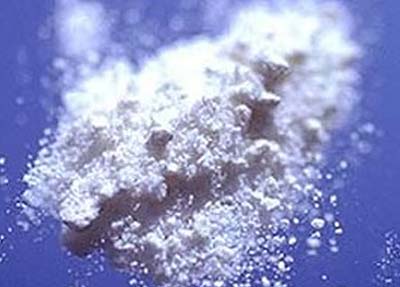Client: Study by The National Institute for Criminalistics and Criminology, Drugs and Toxicology, Brussels, Belgium and the University of Antwerp, Chemistry, Antwerp, Belgium.
Objective: To develop a technique to identify and quantify cocaine in seized drug powders using Attenuated Total Reflectance Fourier Transform Infrared (ATR-FTIR) spectrometry and multivariate analysis methods. ATR-FTIR spectrometry combined with chemometrics is a low-cost and less time-consuming technique in comparison with chromatographic techniques.
Cocaine is the second most commonly seized drugs of abuse entering Belgium, both for local consumption and for distribution around Europe. A challenging issue when analysing cocaine samples is the presence of many different adulterants and/or cutting agents to increase drug volumes and dealer profits. Analyses of cocaine are routinely performed with conventional techniques: colour testing and/or infrared spectrometry for screening and chromatographic techniques for identification and quantification.
Solution: Circa two hundred cocaine powders were analyzed using a mobile ATR-FTIR spectrometer, gas chromatography-mass spectrometer and gas chromatography-flame ionization detector. The percentage of cocaine in the samples ranged from 12 % to 99 %. Levarmisole, phenacetin, diltiarzerm, caffeine, hydroxyzine, boric acid, benzocaine and Lidocaine were found as by products. Chemometric analysis was performed on the collected spectral data using the Analyze 1Q Limited software package, Analyze IQ Lab (Version 3). Several pre-processing techniques were tested followed by different chemometrical methods to identify and quantify the target cocaine. The most promising models for identification were the Support Vector Machine with Weighted Spectral Linear Kernel (SVMW) and the Spectral Attribute Voting Technique with both an average error of 0.5 %. For the quantification, Principal Component Regression and SVMW were superior with an error prediction of respectively 11.2 % and 8.9%.
Result: Based on the results, the reseachers concluded that these models can be used to identify and quantify a wide variety of cocaine mixtures in routine laboratory analyses but also during on-site analysis by law enforcement, Moreover, the use of these models allows a high throughput, low-cost and quick identification and quantification comparison to the conventional chromatographic techniques.
Reference: Eliaerts, J. Van Durme, F. Meert, N. Samyn, N. Janssens, K. De Wael, K.: “Identification and Quantification of Cocaine using ATR-FTIR Spectrometry and Chemometrics” , 7th European Academy of Forensic Science Conference (EAFS2015), Prague, Czech Republic.
